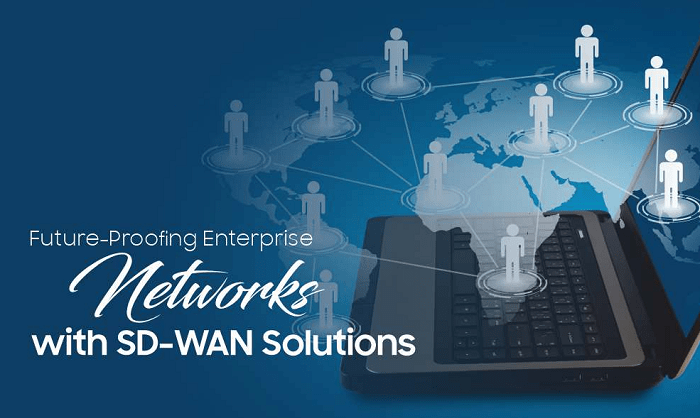As the digital landscape accelerates in complexity and scale, organizations must ensure their networks do more than serve today’s needs—they must anticipate tomorrow’s challenges. Adapting to this ever-shifting environment is about more than speed; it’s about building sustainable, future-ready architectures that keep enterprises secure, agile, and ahead of technological evolution. Adopting solutions like Secure SD-WAN gives enterprises key advantages in both scalability and security from the outset, making proactive modernization a smart business imperative.
In an era defined by digital transformation and disruptive innovation, future-proofing enterprise networks is not a luxury; it is a necessity. Businesses need secure, adaptable, and robust infrastructures to support high-performance applications, cloud integration, and advanced technologies, including AI and IoT. By investing in forward-thinking networking strategies, organizations are positioning themselves for long-term operational efficiency and greater competitiveness. The ability to adapt quickly to market shifts, security threats, and new technological demands separates industry leaders from laggards. Incorporating scalable network design, technologies like SD-WAN, and next-generation capabilities such as 5G and AI ensures that connectivity remains a strong foundation, not a limiting factor. This approach allows companies to manage complexity while optimizing costs and securing their valuable data assets. Despite the challenges posed by legacy systems, bandwidth constraints, and rising cybersecurity risks, structured network modernization efforts—with an emphasis on flexibility and proactive defense—empower organizations to thrive. Forward-looking leaders recognize the value of investing today in networks that can seamlessly support tomorrow’s workloads.
Scalable and Flexible Network Architectures
Successful enterprises design network infrastructures that scale and adapt. A modular approach—where components can be upgraded or replaced individually—ensures that the network grows alongside business needs without unnecessary disruption or expense. Embracing cloud-based networking and hybrid topologies provides the agility to support new locations, users, and applications while controlling operational costs.
The adoption of managed network services has become increasingly popular, with many organizations turning to external expertise to support AI, IoT, and other transformative technologies. This trend enables faster adoption of leading-edge solutions and helps manage the complexity of integrating multiple network elements and providers. According to research from ISG, managed network service adoption continues to rise as organizations seek greater reliability and performance from their digital investments. To stay agile, organizations must also focus on interoperability and future compatibility—ensuring any new network technology can work with both legacy systems and new innovation tiers. This future-proof mindset minimizes risks and enables a seamless transition as technologies evolve.
The Role of SD-WAN in Modern Enterprises
Software-Defined Wide Area Networks (SD-WAN) transform organizations’ management and optimization of connectivity across branch sites, data centers, and cloud environments. Through centralized management, dynamic traffic routing, and real-time analytics, SD-WAN enhances application delivery with greater reliability and security while reducing reliance on costly legacy hardware. It empowers network teams to prioritize mission-critical traffic, mitigate congestion, and enforce granular security policies from a single interface. As a result, enterprises benefit from improved application performance, higher resilience, and streamlined cloud adoption—all while keeping operational costs under control.
Key Benefits
- Reduced network complexity with centralized orchestration
- Cost savings through bandwidth optimization
- Enhanced security through integrated policies and segmentation
- Improved agility in deploying new sites and services
Integrating 5G and AI for Enhanced Performance
The convergence of 5G wireless connectivity and AI-driven network operations is revolutionizing enterprise performance. 5G brings ultra-reliable, low-latency connections and massive bandwidth—opening possibilities for advanced IoT initiatives, edge computing, and mobile workforce enablement. AI, meanwhile, powers the automation and intelligence necessary to monitor, predict, and optimize network behavior in real time. Reliable connectivity underpins advanced applications, as Ericsson’s 2025 State of Enterprise Connectivity report confirms. Companies leveraging 5G can push the frontier of digital transformation, while AI enables proactive network management, automated remediation, and predictive scaling—all essential for business continuity and user experience. Leading organizations are building multi-layered network architectures where 5G acts as the high-speed access layer for edge devices, and AI orchestrates performance, security, and resource allocation end-to-end. This synergy is the cornerstone of tomorrow’s resilient, scalable, and intelligent enterprise infrastructure.
Security Considerations in Network Modernization
No modernization effort is complete without addressing evolving security risks. With greater network flexibility and cloud integration come new threat vectors requiring dynamic and adaptable defenses. Integrating Virtual Network Functions (VNFs) and Software-Defined Networking (SDN) allows for flexible, context-aware security controls that adjust as user needs and risks evolve. A study on arXiv explores how SDN and VNF can collectively improve incident response and security posture, especially in next-generation 6G networks. Enterprise security strategies must focus on Zero Trust principles, advanced encryption, continuous monitoring, and automated threat response. This approach ensures the alignment of cyber resilience with the pace of digital transformation.
Emerging Best Practices
- Implement Zero Trust architectures across new and legacy environments
- Automate security policy enforcement using SDN-based segmentation
- Regularly audit and update security frameworks as technology evolves
Conclusion
Enterprise networks are the backbone of digital business, and their future-readiness determines a company’s capacity to innovate and compete. By prioritizing flexible architecture, adopting technologies like SD-WAN, and integrating 5G and AI, organizations foster sustainable, high-performance networks ready for future demands. Above all, embedding security deeply into network modernization efforts ensures continued trust and resilience. With a strategic, forward-thinking approach, enterprises not only keep pace with change—they lead the way.

